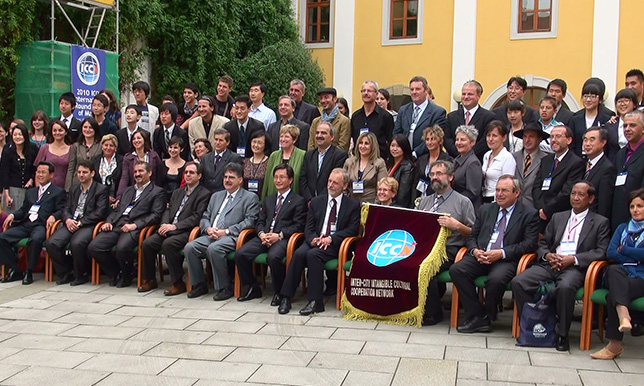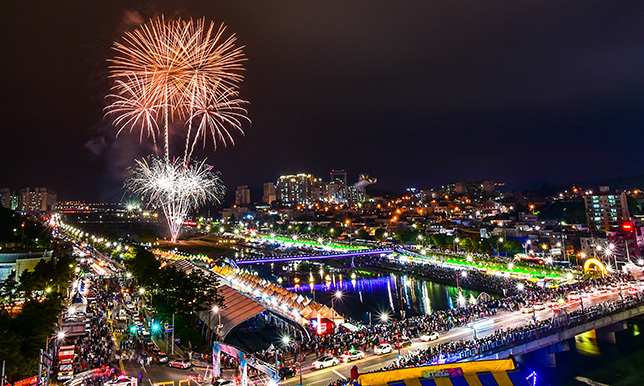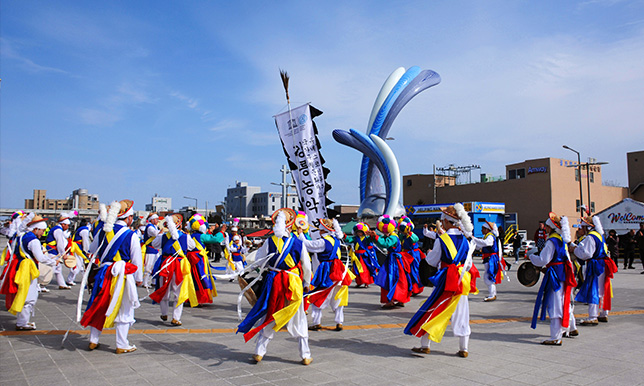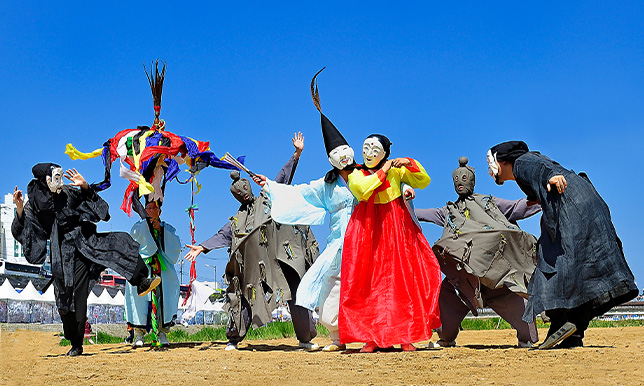Intangible Cultural Heritage
Intangible Cultural Heritage in Gangneung
The Republic of Korea has a total of twenty-two UNESCO Intangible Cultural Heritages of Humanity, three of which are located in Gangneung, a city rich in history and culture: "Gangneung Danoje Festival," "Gangneung Nongak," and "Masquerade Dance." In addition, ICCN (Inter-City Intangible Cultural Cooperation Network), which was established by the City of Gangneung, is the only international organization in the world comprised of municipal governments and cultural institutions dedicated to the preservation of the world's intangible heritages.
-

Gangneung ICCN
In 2004, the City of Gangneung hosted a summit of mayors from international cities as an opportunity to establish the necessity for a global network of cities. It is the world's only international organization dedicated to the preservation of intangible cultural assets. It was formally accepted as a UNESCO advisory organization for the protection of intangible cultural assets in 2012, and its members include 36 institutions from 28 cities in 38 countries, with the present secretariat in Algeme, Spain.
-

Gangneung Danoje Festival
The "Gangneung Danoje Festival" is a communication between gods and mankind as well as a human drama about the coexistence of nature and humanity. The Danoje Festival has been celebrated for over a thousand years, including periods of Japanese colonial rule and the Korean War. As a result, the Gangneung Danoje Festival was designated as an Important Intangible Cultural Asset No. 13 in 1967 for its originality as a traditional folk festival. It was designated as a Masterpiece of the Oral and Intangible Heritage of Humanity by UNESCO in November 2005, making it a cultural heritage to be preserved by mankind worldwide and Gangneung's emblematic festival, visited by over 1 million people each year.
-

Gangneung Nongak (Folk Music Tradition)
The National Big Six Nongak (including Gangneung Nongak) was registered as UNESCO Intangible Cultural Heritage of Humanity on November 17, 2014. Yeongdong Nongak, focused on Gangneung Nongak, is a village gut (shaman ritual) that has been passed down in the eastern section of the Taebaek Mountain Range. Danggut is not widely performed, but it includes "Dalmajigut," "Hwaetbullori," "Notdari balgi," and "Donggori batgi," which are not found elsewhere. It is also distinguished by the performances of "Gimmaegi" and "Jilmeokgi," which may be referred to as Dure Nongak, as well as performances from "Nongsapuri."
-

Gangneung Masquerade Dance
Gangneung Masquerade Dance, together with Andong Hahoe Byeolsingut Mask Play and Bukcheong Sajanoreum, is an early folk play that shows the shift from gut to drama. It is the only pantomime among Korean masquerade dances, focusing on dance and mime, and was passed down through the Joseon Dynasty by government-employed servants. Recognized for its originality, the Gangneung Masquerade Dance was registered as a UNESCO Intangible Cultural Heritage of Humanity in November 2022 as one of the Talchum ((Korean mask dances).
※ Talchum (Korean mask dances): consisting of 13 national intangible cultural assets and 5 provincial intangible cultural assets National Intangible Cultural Assets: Yangju Byeolsandaenori, Tongyeong Ogwangdae, Goseong Ogwangdae, Masquerade Dance in Gangneung Danoje Festival, Bukcheong Sajanoreum, Bongsan Talchum, Dongrae Yaryu, Gangryeong Talchum, Suyeong Yaryu, Songpa Sandaenori, Eunyul Talchum, Hahoe Byeolsingut Talnori, and Gasan Ogwangdae, among others Provincial Intangible Cultural Assets: Gangwon Intangible Cultural Asset Sokcho Saja Nori, Gyeonggi Intangible Cultural Asset Toegyewon Sandae Nori, Gyeongbuk Intangible Cultural Asset Yecheon Cheongdan Noreum, Gyeongnam Intangible Cultural Asset Jinju Ogwangdae and Gimhae Ogwangdae, among others
